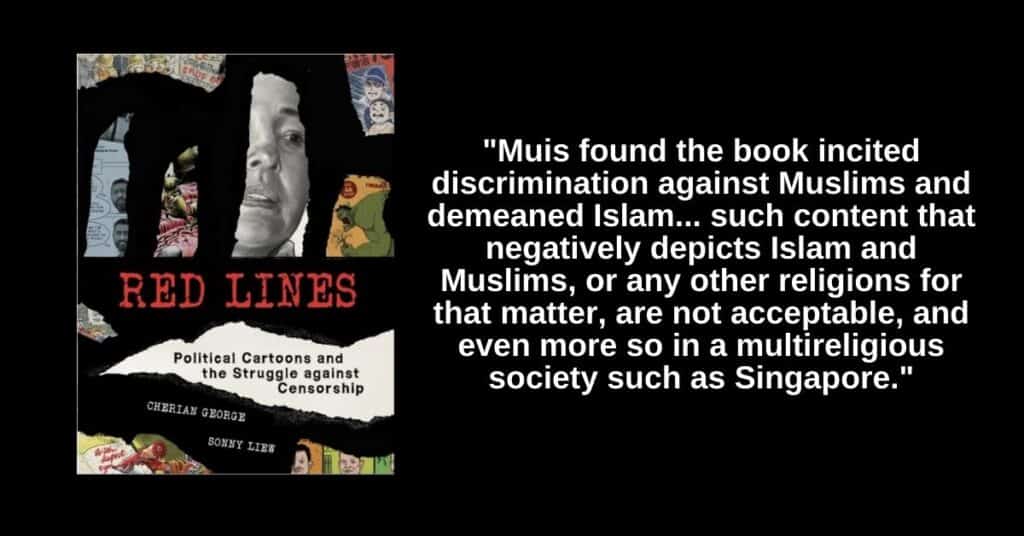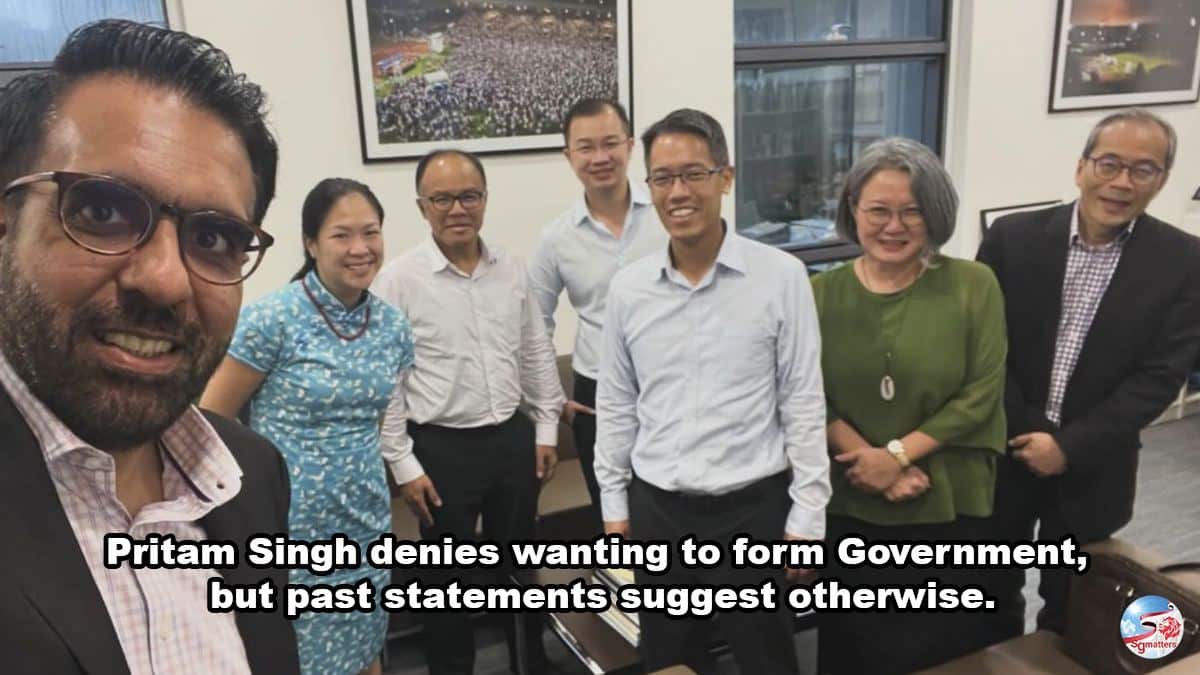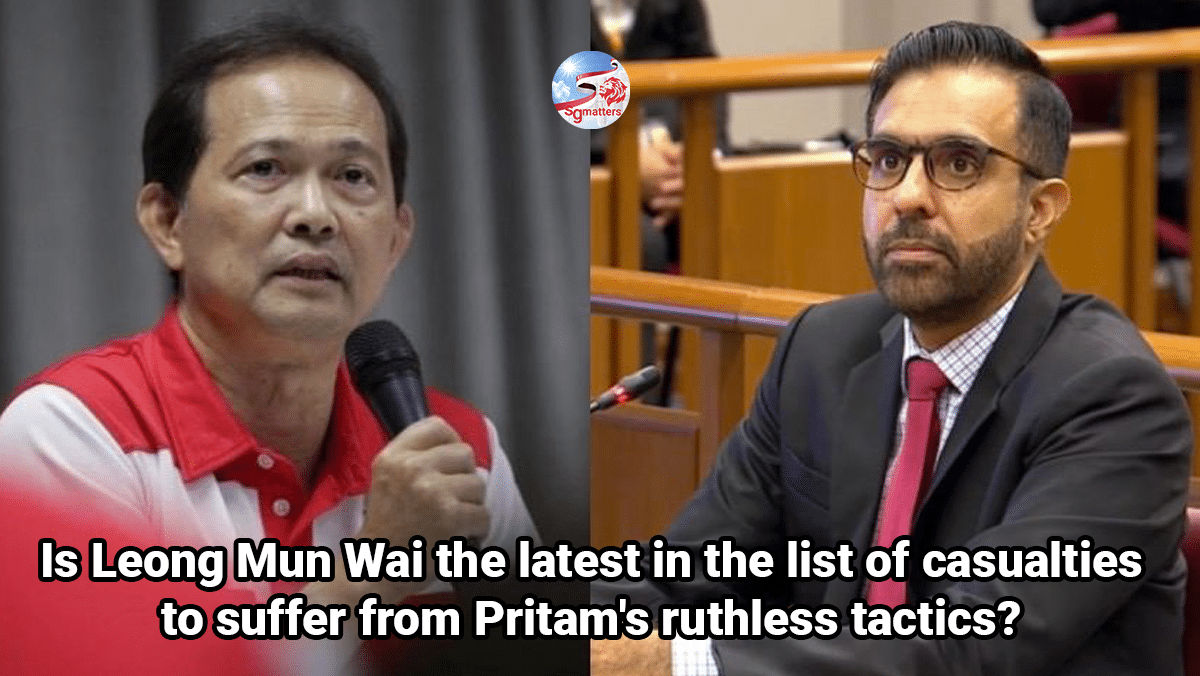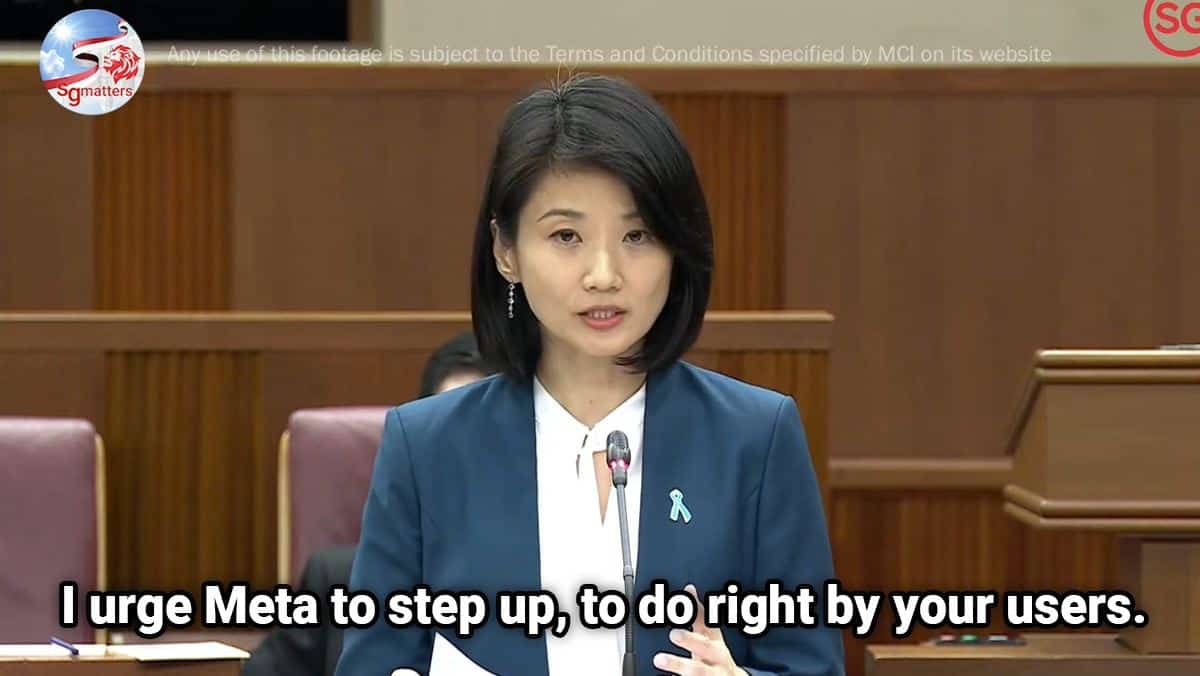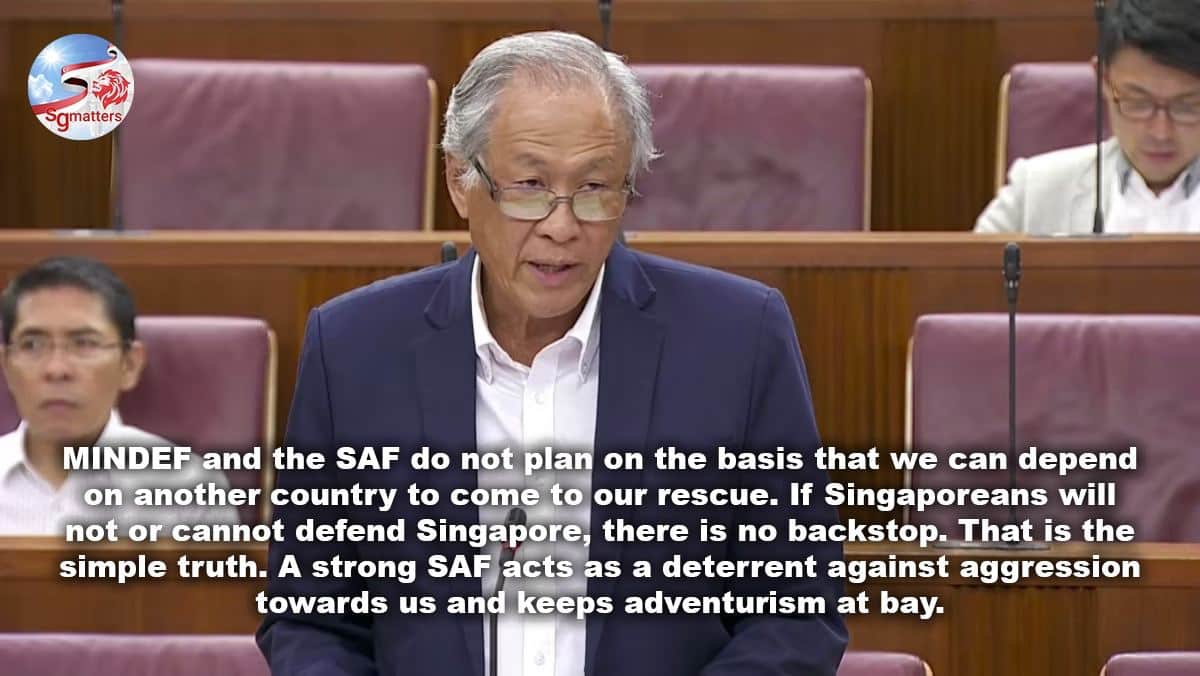Singapore is the most religiously diverse country in the world. The multi-racial and multireligious harmony we enjoy in Singapore today is not by chance and should never be taken for granted. It is a state that we have worked hard to nurture and shape over many decades.
“We do not want to risk anything that will begin unravelling the peace and harmony we enjoy from the due respect and consideration everyone gives to others,” said Minister-in-charge of Muslim Affairs Masagos Zulkifli.
Mr Masagos said this in his parliament speech on 12 Jan, in response to the question on the banned publication, Red Lines: Political Cartoons and the Struggle Against Censorship which examines the motives and methods of political censorship of cartoons around the world.
Seeing Red
Written by Professor Cherian George and cartoonist Sonny Liew, “Red Lines” was launched in the US in August last year. It contains caricatures of various religious figures and other denigratory references to Hinduism and Christianity, including reproductions of Charlie Hebdo’s illustrations of the Prophet Muhammad, which demean the Prophet.
The IMDA has classified “Red Lines” as prohibited under Singapore’s Undesirable Publications Act (UPA).
Under the UPA, anyone convicted of importing, selling, distributing, making, or reproducing an objectionable publication is liable to a fine of up to $5,000 and/or imprisonment for up to 12 months.
Many prominent publications have refrained from publishing Charlie Hebdo’s cartoons as they are considered irresponsible and inflammatory. These illustrations have sparked many violent protests worldwide, including attacks at the original publisher’s premises that left 12 people dead, in 2015.

In 2020, a French secondary school teacher was attacked and beheaded near his school after showing his students the caricatures of Prophet Muhammad during a lesson on freedom of speech. His killer was a teenager, who shared a picture of the murder on Twitter minutes after the attack.
MUIS supports IMDA’s classification of the book, as it considers the content incites discrimination against Muslims and demeans Islam. Muis also said that such content that negatively depicts Islam and Muslims, or any other religions for that matter, are not acceptable, and even more so in a multireligious society such as Singapore.
Mr Masagos Zulkifli opined that while the authors may intend for the publication to educate, it is unacceptable to publish such caricatures and insulting images of the Prophet in the name of free speech, academia or otherwise.
He added, “Let me reiterate that Muis determined that the images are indeed offensive to Muslims. I can only imagine the feelings of our people, Muslims and non-Muslims, if such images are allowed to be published in Singapore. “
“The Government remains committed to working closely with all our religious communities to preserve and strengthen our racial and religious harmony, which is the bedrock of our cohesive society.”
A 2019 paper on Religion in Singapore: The Private and Public Spheres by the Institute of Policy Studies (IPS) found that almost one in two young Singaporeans are open to religious extremists posting their views online. Such openness may be a result of increased engagement and exposure to the ideals of freedom of speech and expression found in much online content. These ideals, if left unmitigated, can fuel prejudices, seed discord, and cement intolerance towards other faiths, all of which may affect our national security in the future.
This finding raises concerns on how the younger generation will manage racial and religious issues when faultlines are exploited or accentuated by bad actors in the future. Children and youths must be aware that freedom of expression is not without boundaries. Ultimately, they must never take for granted or overlook values of mutual respect and understanding between races and religions. They must understand their words and deeds have implications on others.
Therefore, Singaporeans need to be critical of messages that propagate racial and religious prejudice and take a stand against religious prejudices such as those found in “Red Lines”.
Freedom of expression, of whatever argument to publish such content, cannot be tolerated.

